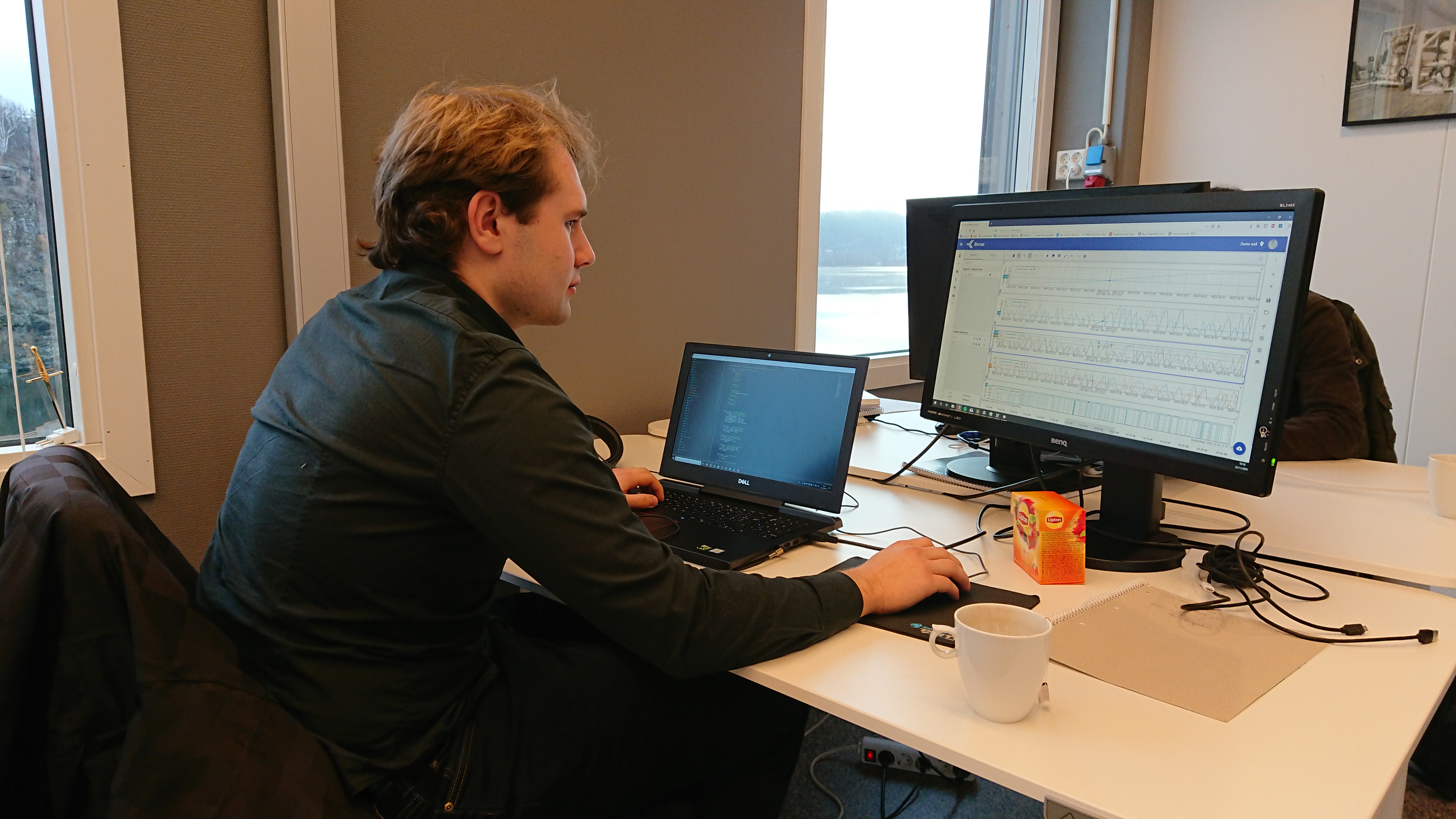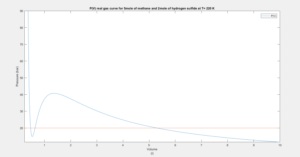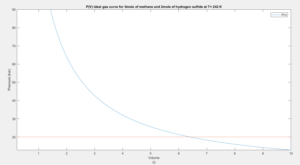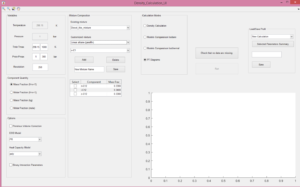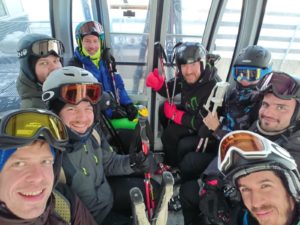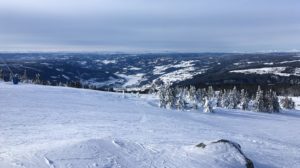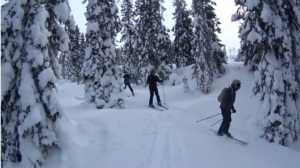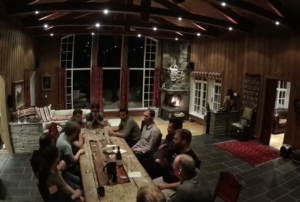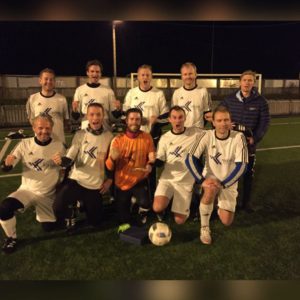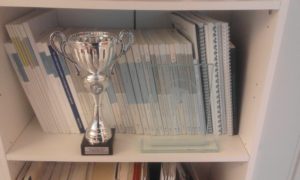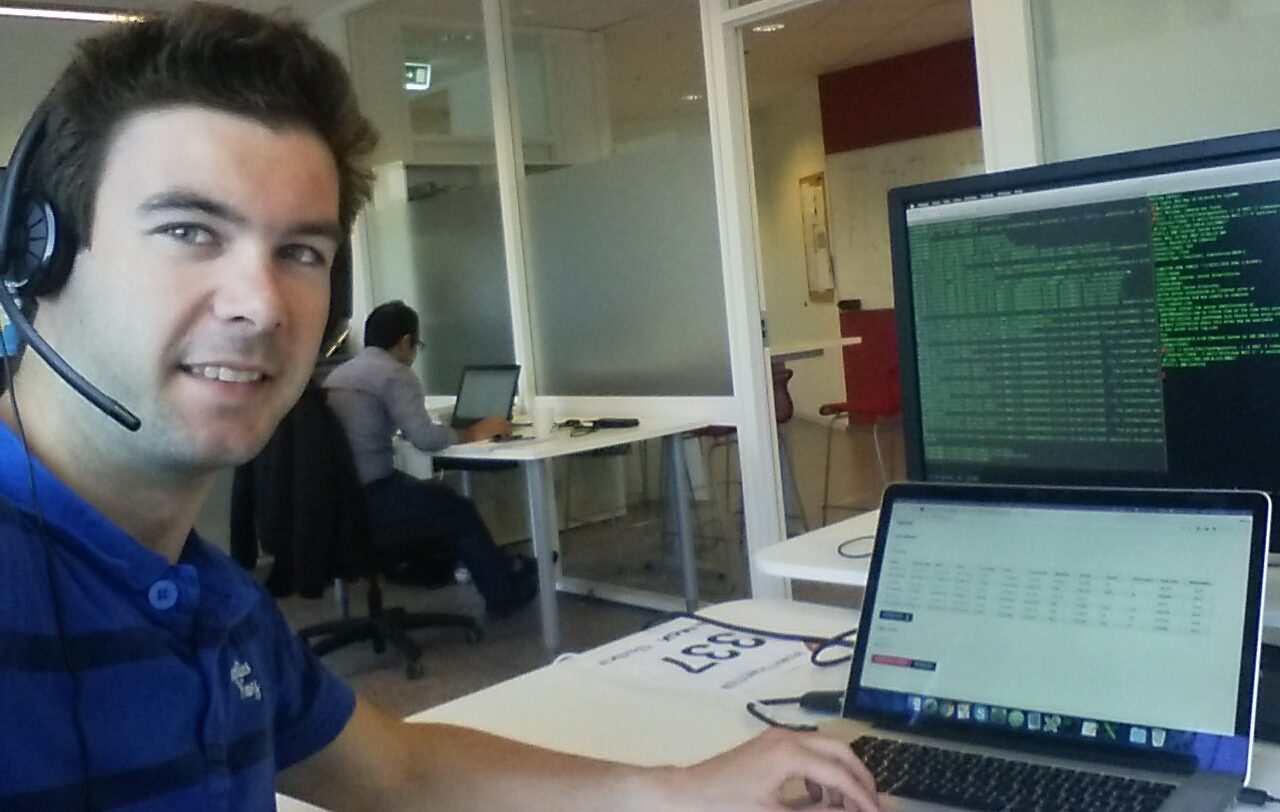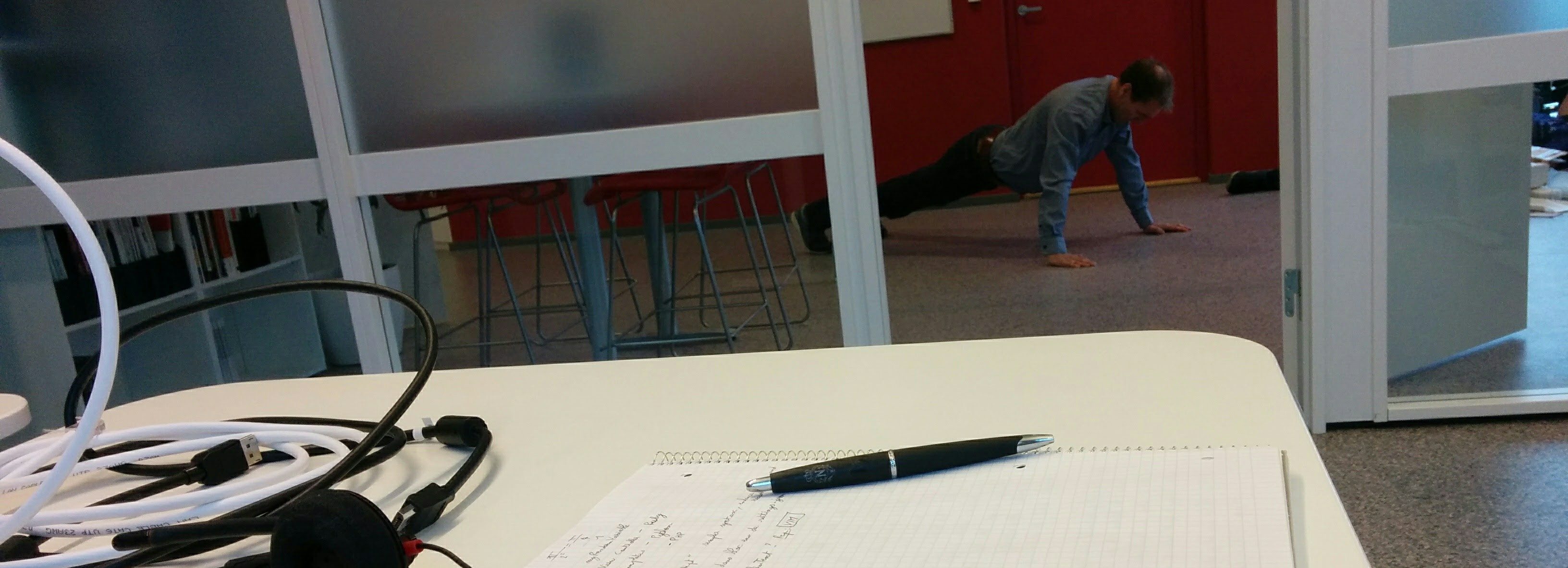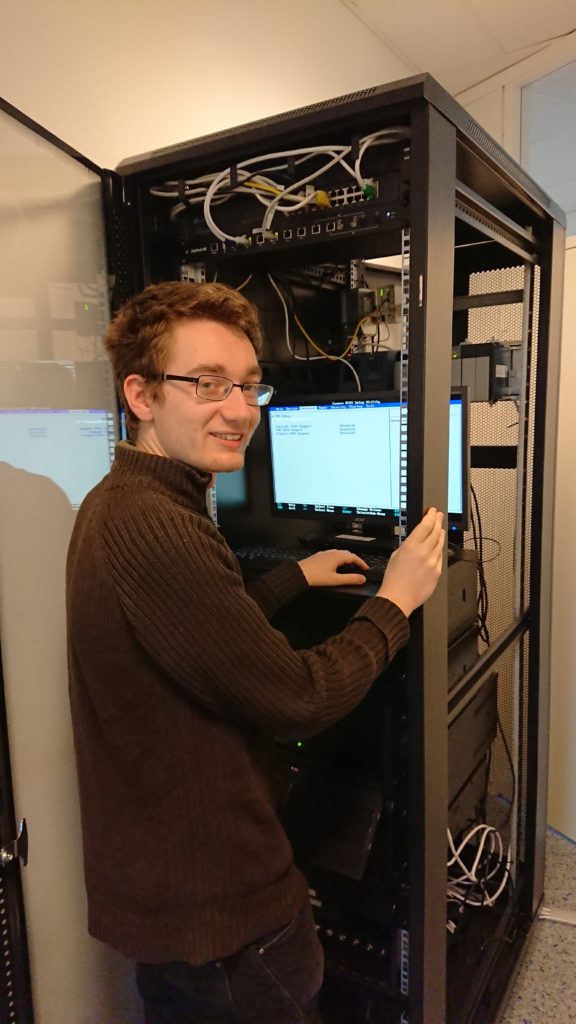
As yet another internship student get ready to leave Kelda for new internship opportunities we managed to do an interview with Louis Meyrat before it got too late. Louis has, like Thomas, been a part of the Bivrost product and an ever-growing list of interns from Mines ParisTech in France. Since he arrived at Kelda, Louis has constantly shown his dedication to the development of Bivrost. His feeling of responsibility to the product also shows in the interview below. We’re happy to present another interview in the interns-series of the Kelda blog, with what I think we could safely say is the most experienced coder we’ve had as an intern so far.
First of all, you’ve been here for nearly 6 months now, how has your overall stay been?
That’s a very general question, but I have to say it’s been good. Like Thomas, this is my first time in Norway and in any Nordic country actually. Kelda was my first internship and real work experience. I have done an internship at a factory to learn how it is to work, but that was much shorter and didn’t give the same kind of experience. My stay here at Kelda has been great. It’s a very small company where everyone is friendly. Even though I don’t have that much work experience I think I contribute more to the product by working in a small company than in a bigger one. We’ve still had sort of a top-down approach in the Bivrost project with a Product Owner that decided the next steps in the development, but our inputs were also listened to.
On a more personal level, can you tell us a little bit about yourself, your age, where are you from in France and how did you end up at your school?
I’m 21 years old from Toulon in southern France. A fun fact is that this city has one of the best rugby teams in France. After finishing high school I started preparation for engineering school at a school close to Versailles. Here we learned a lot of math and physics. I then started at Mines ParisTech two years ago were I’m studying Management of Information Systems. One of the reasons I wanted to do computer science is that it interested me greatly since high school when I started coding by myself. I’ve done some computer science courses at Mines, but I also enjoy physics which I want to be proficient in. To learn more coding languages I’ve done many small projects by myself and with others. From this, I’ve learned that planning is very important, even when you code by yourself since you easily end up with a very messy code if you don’t have a plan.
What about outside school, what do you like to do?
Sort of related to school, but in my spare time, I’ve been part of the robotics group at schools. I didn’t work very much with the automatics, but I made most of the logic in the code. Like I mentioned earlier, I’ve done code projects by myself and with others. Other than coding I like anime moves and Japanese culture and language. I know enough Japanese to be understood, but not the advanced stuff.
How did you hear about Kelda, and what made you want to go here?
Like Thomas, I heard of Kelda from Pierre-Nicolas. I wanted to do an internship that involved full-stack development and Kelda offered this opportunity. I was not very familiar with web development before coming here, which was another motivating factor for me. When I applied I expected to work on frontend and backend tasks in Bivrost and learn to use the newest architectures in web development. In hindsight, the internship was exactly how I expected it to be.
When you arrived in June, we had quite a large team working together on the Bivrost project. Due to this reason we started working with Scrum, how was it work in a big team and what did you like with the way we worked with Scrum?
I’ve just heard the word Scrum before starting at Kelda, so it was really new to me. It was interesting to have two weeks deadlines where we had to deliver running code in the end. Overall I think the Scrum process was great to work with and we got to do much work together as a team.
While you’ve been here we have quickly come to realize that you’re brilliant on Linux and you’ve become our go-to-Linux expert. Especially if our main servers need maintenance. You are a hardcore Linux user, right?
I don’t feel like I’m a Linux expert, but I chose to work in it because I think it’s the best platform to do development in Bivrost. I also did some maintenance of the Kelda servers that host Bivrost and ensured that they were updated and running. To me, this is a part of being a full-stack developer. Other than that, I don’t feel like I did too much in Linux while I was here. I got to learn more about Apache and Docker when deploying Bivrost to the servers, but still, I’m not too familiar with those frameworks.
Do you feel that your ideas and suggestions are taken into account in the Bivrost development and future tasks?
Yes, I would say so. Most of my suggestions were related to organization and optimization of the code. This are things the product owner does not directly notice since he is not inside the code himself. The suggestions I’ve posted shows up quite fast in the product backlog.
Since you arrived the Bivrost project has taken huge steps and is now being shipped out to our customers. How do you feel about other people (outside Kelda) now starting to use it, is it motivating?
I think it’s very rewarding to see the product in use by external users. It is good to have Kelda using employees the product, but it is even more interesting when we have external users. Of course, this gives much more responsibility to the developers to ensure the code works as it should. We need to be more careful when we deploy a new version of the Bivrost code and test it thoroughly before finalizing a deploy.
Throughout your internship, we’ve seen that you are quick to respond to bug reports on Bivrost. This has also happened in some weekends, where you have stepped in and fixed the problem with short notice.
I don’t like bugs and when I hear about something not working properly I want to fix the problem right away. I feel that when we have deployed some code that does not work as intended I need to take responsibility and fix them. This is especially true when we have external customers using the product.
After working with web development for almost half a year now, do you have a favorite framework? And what frameworks don’t you like working with?
For my favorite framework, I have to say React. It is a very nice way to make UI without templating. You can also add small logic in the rendering which is very convenient, but be careful it can easily get too much logic in the rendering and that is very bad. React is very nice since it can be used to create mobile and desktop applications as well as web applications. For instance, the new Skype application is written with React. Based on what I’ve learned in my internship I can absolutely see why javascript is getting bigger and bigger.
On the other hand, I can’t find a framework I dislike. I would rather say that I dislike the lack of framework. Some parts of the Bivrost code still don’t use all frameworks as they are intended to be used, which quickly becomes a bit frustrating.
Can you mention some of the main packages you’ve worked with?
The main packages/frameworks I’ve worked with are Material UI, React, D3, Redux, Meteor packages. Python and javascript. All these packages are used extensively in Bivrost.
What is the biggest challenge you’ve encountered in your internship, especially related to the development you have done here?
I think it’s really hard to write proper documentation. It should not be too long, but still descriptive. Someone not working with Bivrost should be able to understand the documentation without spending too much time. I think it is hard to be concise and give proper information at the same time.
What is the biggest outcome of your time as an intern here at Kelda?
When I got here I didn’t know any of the frameworks we use. In my six months stay, I learned a lot about all of them and are now quite proficient. I also learned about Scrum & Agile development which I think will be very useful in the future.
What do you think about Norway as a country? While you were here we had the warmest summer in 70 years. Did you notice the warm weather, or is it just a usual summer in France?
Well, for one thing, the summer was warmer than expected, but now it’s starting to get too cold and dark for me. I’m glad I can avoid the Norwegian winter. One thing that surprised me a bit is how nice the city is and how much nature it is close to the city. It might be because Porsgrunn is a small city, but it was really nice. I like the public transport system and bike trails which is really nice for the population. Many cities in France don’t have these things, even larger cities. The infrastructure in Norway is really nice I think.
Has this work been something you would return to?
The work has been very interesting, but if I get to chose I would like to work on more low-level programming. I think that debugging C/C++ code is very fun, especially when you have to find really challenging bugs. I miss bugs due to pointers and compilers, which we didn’t have much of in the Bivrost project.
Before we let you go, can you tell us a little bit about what you plan for your next internship? Also, where do you want to be in the future? Do you imagine yourself working as a developer or are there other career paths that interest you more?
I definitely want to be a developer, but maybe not web development. Of course, I’m open for web development if I can’t find anything else, but preferably I would work with more low-level coding. I would also like to do something with more users than we have in Bivrost now. I think it would be very rewarding to have 1000+ users, but of course, this comes with more responsibility.
I don’t know where my next internship will be yet, but I’ve applied to a company in Canada which does cloud computing on GPUs and also to a place in Japan. I’m considering to apply to UK or Germany as well. Maybe it is time to practice my German again?
Again, thanks for taking the time to talk to us. The Kelda Blog editorial office wish you all the best in your time ahead. Thanks for taking the time to talk to the Kelda Blog editorial office.
